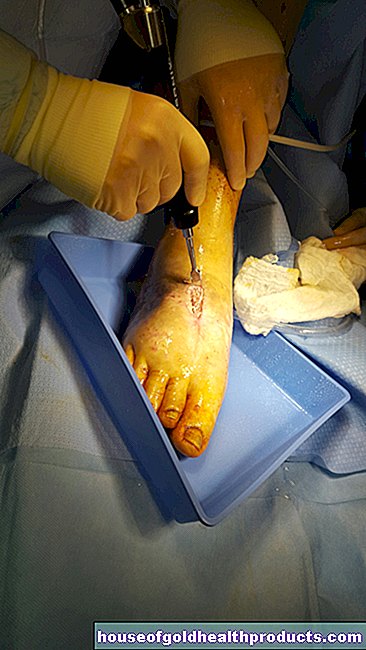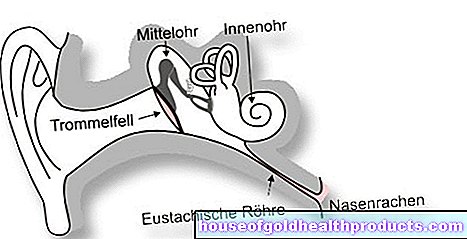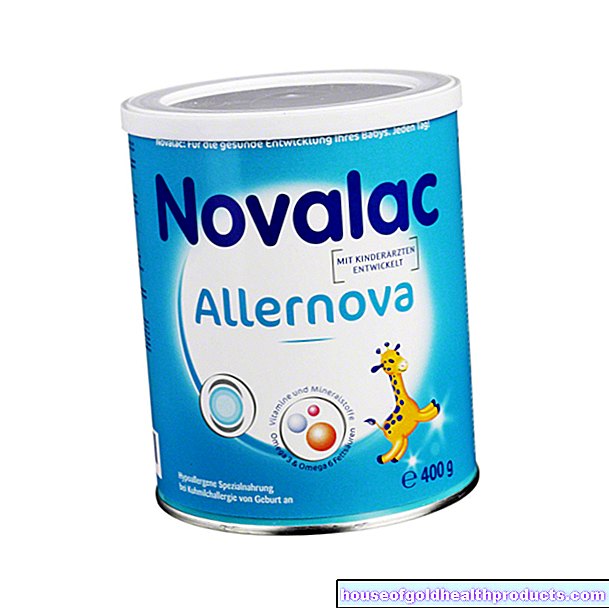Autoimmune hepatitis
and Martina Feichter, medical editor and biologist Updated onDr. med. Mira Seidel is a freelance writer for the medical team.
More about the expertsMartina Feichter studied biology with an elective subject pharmacy in Innsbruck and also immersed herself in the world of medicinal plants. From there it was not far to other medical topics that still captivate her to this day. She trained as a journalist at the Axel Springer Academy in Hamburg and has been working for since 2007 - first as an editor and since 2012 as a freelance writer.
More about the experts All content is checked by medical journalists.
Autoimmune hepatitis (AIH) is an inflammation of the liver that is triggered by a dysregulation of the immune system. As with other forms of hepatitis, possible symptoms include fatigue, fever, joint pain and jaundice. The exact cause of autoimmune hepatitis is not yet known. The disease is treated with drugs that suppress the immune system (immunosuppressants).Here you can find out everything you need to know about autoimmune hepatitis.
ICD codes for this disease: ICD codes are internationally recognized codes for medical diagnoses. They can be found, for example, in doctor's letters or on certificates of incapacity for work. K75
Autoimmune hepatitis: description
Autoimmune hepatitis (AIH) is a so-called autoimmune disease. These are diseases in which the immune system forms antibodies against the body's own structures (autoantibodies). In the case of autoimmune hepatitis, these are autoantibodies against the liver tissue: they attack the liver cells and ultimately destroy them as if they were foreign cells or dangerous invaders.
Autoimmune hepatitis is usually chronic. However, an acute course is also possible.
About 80 percent of all patients with autoimmune hepatitis are women. The disease can occur at any age, but is most common in mid-adulthood (especially between 40 and 70 years of age). In Europe, around one to two in 100,000 people develop autoimmune hepatitis every year.
Combination with other diseases
Autoimmune hepatitis often occurs with other immune-mediated diseases. These include, for example:
- autoimmune thyroid inflammation (autoimmune thyroiditis = Hashimoto's thyroiditis)
- autoimmune inflammation of the biliary tract within the liver (primary biliary cholangitis)
- autoimmune inflammation of the biliary tract inside and outside the liver (primary sclerosing cholangitis)
- Rheumatoid Arthritis (RA)
- Systemic lupus erythematosus
- Sjogren's syndrome
- Type 1 diabetes mellitus
- Celiac disease
- Ulcerative colitis
- Multiple sclerosis (MS)
- Vitiligo (white spot disease)
- Psoriasis (psoriasis)
Autoimmune hepatitis: symptoms
Acute autoimmune hepatitis causes symptoms of acute liver inflammation such as fever, nausea and vomiting, epigastric pain, and jaundice. The disease is rarely rapid and severe (fulminant) with acute liver failure. This can be recognized, for example, in jaundice, blood clotting and consciousness disorders.
Most patients develop chronic autoimmune hepatitis with a gradual progression. In most cases, there are no or only unspecific symptoms for a long time, such as:
- Fatigue and poor performance
- Loss of appetite
- Aversion to fatty foods and alcohol
- Abdominal pain and headache
- fever
- dizziness
- light stool and dark urine
- Yellowing of the skin, mucous membranes, and the white sclera inside the eyes (jaundice)
Most often, chronic autoimmune hepatitis leads to cirrhosis of the liver.
In many patients, autoimmune hepatitis occurs together with other autoimmune diseases (such as type 1 diabetes, autoimmune thyroiditis, etc.). Then there are additional symptoms.
Autoimmune hepatitis: causes and risk factors
In autoimmune hepatitis, autoantibodies attack the liver tissue. This triggers inflammation that ultimately destroys the liver cells.
It is not known why the immune system of those affected is directed against the body's own tissue. Experts suspect that the patients have a genetic predisposition to autoimmune hepatitis. If external factors (triggers) are added, the disease breaks out. Infections, environmental toxins and pregnancy are discussed as such triggers.
Autoimmune hepatitis: classification
Autoimmune hepatitis (AIH) was originally divided into three variants, according to the type of autoantibodies present:
- Type 1 autoimmune hepatitis (AIH1): This is the most common type of autoimmune hepatitis. Those affected have anti-nuclear antibodies (ANA) and antibodies against smooth muscle fibers (anti-SMA). Certain antibodies against neutrophils, called p-ANCA (ANCA = anti-neutrophil cytoplasmic antibodies), also often appear.
- Type 2 autoimmune hepatitis (AIH2): It affects one in ten AIH patients. Typical here is the detection of certain antibodies against so-called liver-kidney microsomes (anti-LKM1). Two other autoantibody types are found less frequently (anti-LC1, anti-LKM3).
- Type 3 autoimmune hepatitis (AIH3): Only antibodies against soluble liver antigens / liver pancreas antigens (anti-SLA / LP) can be detected in the blood of those affected.
A division into types 1 and 2 is currently in international use. Type 3 autoimmune hepatitis is regarded as a variant of type 1: The autoantibodies typical of AIH3 (anti-SLA / LP) sometimes come together with ANA and / or anti -SMA (typical autoantibodies in type 1 autoimmune hepatitis).
Autoimmune hepatitis: examinations and diagnosis
Diagnosing autoimmune hepatitis is not easy - there is currently no diagnostic test that can prove AIH. Instead, it is a diagnosis of exclusion: only when all other possible causes for the symptoms can be ruled out (e.g. virus-related hepatitis), before the diagnosis "autoimmune hepatitis" is made. Various examinations are necessary for this and should be carried out by an experienced specialist.
Blood tests
If you suspect autoimmune hepatitis, the doctor will draw blood from you. Liver values such as GPT, GOT, Gamma-GT and alkaline phosphatase (AP) are determined in the laboratory. Elevated readings indicate possible liver damage such as from autoimmune hepatitis. The antibody type immunoglobulin G (IgG) is also increased in this disease.
Additional blood values such as the albumin and the Quick value are measured in order to prove a possibly reduced liver function.
The blood sample is also checked for autoantibodies against liver cells. Usually different autoantibodies can be detected. But that alone is not enough for a definitive diagnosis.
If autoimmune hepatitis is acute or very sudden and severe (fulminant), autoantibodies and an increase in immunoglobulin G (IgG) may be absent.
The blood sample will also be checked for antibodies to the hepatitis virus. In order to be able to diagnose autoimmune hepatitis, these must not be present - otherwise viral hepatitis is likely to be responsible for the symptoms.
The TSH value should also be determined when diagnosing autoimmune hepatitis. This hormone level provides information on thyroid function. Autoimmune hepatitis is often accompanied by an autoimmune thyroid inflammation (autoimmune thyroiditis).
Ultrasonic
With the help of an ultrasound examination of the liver, generally pathological changes in the tissue can be detected. This includes, for example, the conversion of liver tissue into connective / scar tissue (fibrosis of the liver). It ultimately leads to cirrhosis of the liver. This can result from chronic autoimmune hepatitis, but it can also have other causes.
About a third of patients have cirrhosis of the liver by the time they are diagnosed with autoimmune hepatitis.
Treatment attempt with immunosuppressants
Sometimes the doctor will try drugs that suppress the immune system (immunosuppressants) using glucocorticoids (glucocorticosteroids, "cortisone"). These belong to the standard therapy for autoimmune hepatitis. If the patient's symptoms improve as a result of the medication, this is an indication of autoimmune hepatitis, but not conclusive evidence.
Liver biopsy
To confirm the diagnosis of autoimmune hepatitis, the doctor takes a tissue sample from the liver (liver biopsy). It is examined more closely in the laboratory. If characteristic cell changes are found, it is very likely that autoimmune hepatitis is actually present.
Autoimmune hepatitis: treatment
The cause of autoimmune hepatitis cannot be treated so far. That means: the dysregulation of the immune system cannot be corrected. But you can administer drugs that suppress the immune system. These immunosuppressants inhibit the inflammatory processes in the liver. This helps against the symptoms and generally prevents further liver damage (up to and including cirrhosis and liver failure).
Azathioprine and the glucocorticoid prednisolone (or its precursor, prednisone) are usually prescribed for autoimmune hepatitis therapy. By combining the two drugs, the cortisone preparation prednisolone can be dosed lower and usually slowly discontinued at some point (if possible within six to twelve months). In this way, side effects of longer, high-dose cortisone therapy can be prevented.
If the autoimmune hepatitis is very mild with low inflammatory activity, treatment with immunosuppressants can be dispensed with in individual cases.
If the chronic autoimmune hepatitis has not yet led to liver cirrhosis, the active ingredient budesonide in combination with azathioprine can be used instead of prednisolone / prednisone. This is also a cortisone preparation, but is said to have fewer side effects than prednisolone.
In certain cases, other drugs are also used. If, for example, the therapy described above does not work, you can try to treat autoimmune hepatitis with other immunosuppressants such as ciclosporin or tacrolimus. If a patient cannot tolerate azathioprine, alternatives are chosen, for example the immunosuppressant mycophenolate mofetil.
Regular check-ups with your doctor are necessary during treatment.
Prolonged treatment with cortisone can lead to bone loss (osteoporosis). Adult patients therefore receive calcium and vitamin D to prevent osteoporosis.
Patients with severe acute autoimmune hepatitis (fulminant disease) should be taken to a liver transplant center immediately.
How long does the immunosuppressive therapy last?
Immunosuppressive therapy for chronic autoimmune hepatitis usually causes the symptoms to subside (remission). Treatment should then be continued for at least two more years. If possible, this maintenance therapy is carried out with azathioprine alone. If this is not sufficient to avoid a relapse, the patients must also continue to take the cortisone preparation (prednisolone / prednisone or budesonide). This is dosed as low as possible.
At the earliest two years after the illness has ceased (remission), one can try to discontinue the medication in consultation with the attending physician. In some patients, the disease does not return, at least not for the time being: however, it can relapse years later.
In most patients, however, the laboratory values worsen again immediately after stopping the medication. You will then have to continue taking immunosuppressants. In many cases, treatment must be continued for many years.
Autoimmune hepatitis: course and prognosis
Mild autoimmune hepatitis can resolve spontaneously. Otherwise, the disease can usually be treated well with immunosuppressants. Patients then generally have a normal life expectancy.
However, some patients do not respond well to the immunosuppressive drugs. Despite consistent therapy, autoimmune hepatitis can progress to cirrhosis of the liver - with the risk of liver failure and increased mortality. The last treatment option then is a liver transplant.
Tags: laboratory values smoking travel medicine



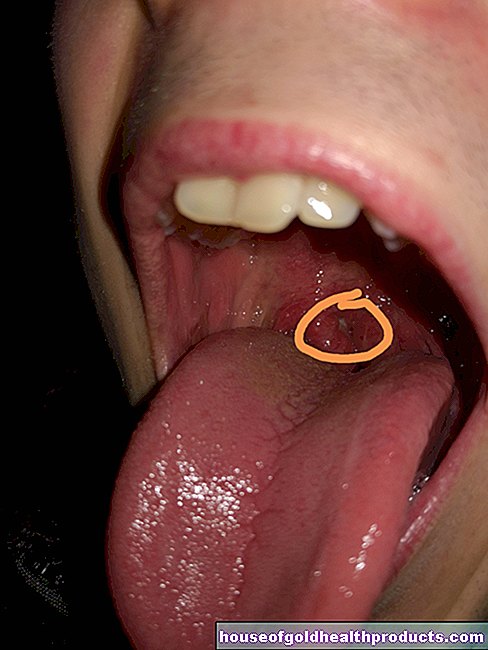



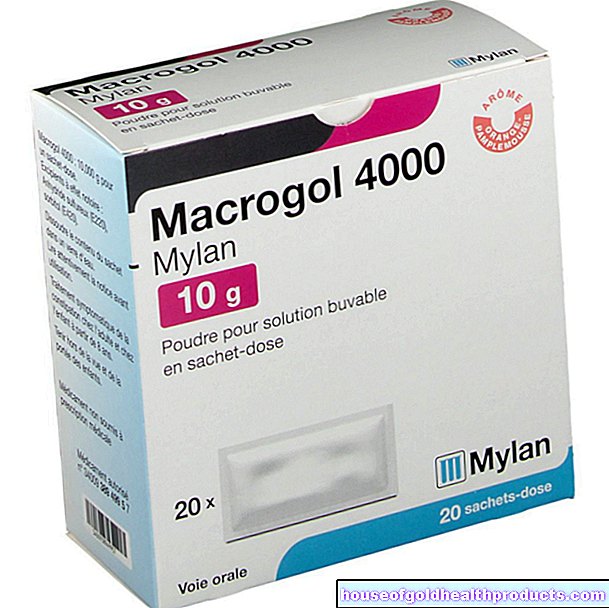





-infektion.jpg)

